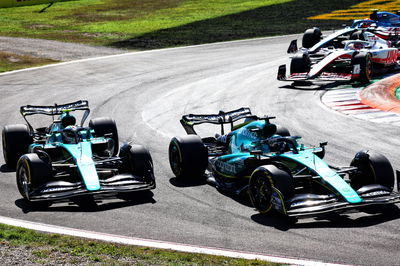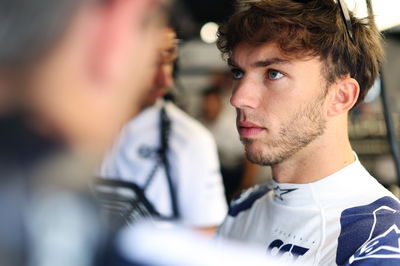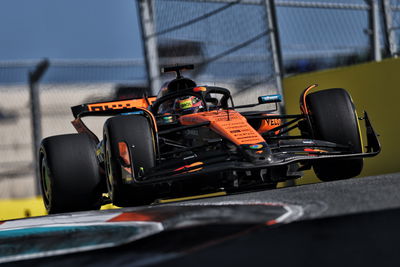Why Red Bull's former aero guru left - and how he can help Aston Martin realise their F1 ambitions
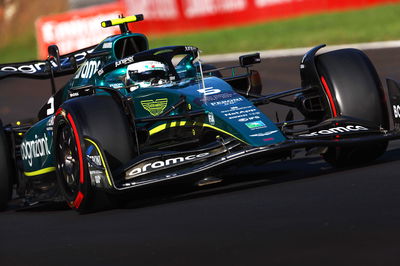
Aston Martin poached Red Bull’s former head of aerodynamics to be their new technical director in June 2021, but a legal dispute over the terms of Fallows’ contract meant he was placed on gardening leave and could not start his new role until April this year.
Fallows joined Red Bull in 2006 and was promoted to head of aerodynamics in 2014. He is considered an instrumental figure behind the Milton Keynes outfit’s F1 success.
Speaking publicly for the first time since his move in an interview on the Aston Martin F1 team’s website, Fallows said he had longed for a “new challenge” and the opportunity “to be part of something that goes from being something modest to something spectacular.”
He added: “If you stay in the same place and you're successful, you're going to carry on doing the same thing - and that becomes kind of boring.”
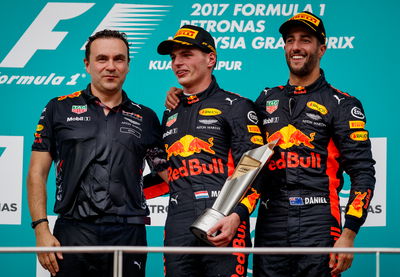
Fallows’ signing comes amid a vast recruitment drive at Aston Martin, as well as the construction of a new state-of-the-art F1 factory, all of which has been funded by Aston Martin’s billionaire owner Lawrence Stroll.
Giving his first impressions of his first few months working at Aston Martin, Fallows revealed what he feels is still needed for the team to realise their ambitions of being capable of winning in F1 by 2025.
“The most striking thing for me is that Aston Martin F1 still feels like a race team – everyone is very supportive of each other,” he explained.
“When a team grows significantly in a very short amount of time, it can become unwieldy and departments don’t talk to each other properly. But the lines of communication are very simple and clear here – we need to make sure we don’t lose that.
“The high quality of the people that we have at Aston Martin F1 has really impressed me. The engineering talent really is at the level that it needs to be – great ideas, really good creativity.
“All that’s been not quite there is a unified clarity of purpose – and that’s what I hope to help bring. It’s all about having an eye on what you’re trying to achieve on the racetrack, right from the outset of designing the car.”
Fallows said the Aston Martin operation reminds him of the early days of Red Bull’s own F1 project when the Austrian energy drink firm took over the former Jaguar team from Ford in 2005.
The ‘Green Red Bull’ and hopes for the future

Aston Martin drew the attention of their rivals when they unveiled a major upgrade at the Spanish Grand Prix in May.
The heavily-revised AMR22 included several similar features to the design of the RB18, prompting Red Bull to accuse Aston Martin of copying their car.
Aston Martin were cleared of any wrongdoing by the FIA despite their car being dubbed a ‘Green Red Bull’ and causing a stir in the Barcelona paddock.
Fallows insists he had “nothing at all” to do with the similar concept approach. Indeed, the 2023 F1 car will be the first Aston Martin designed under Fallows’ leadership.
“The upgrade had already been designed before I arrived,” he said.
“I completely understand why the team did it. The car was always designed with two concepts in mind and from very early on the feeling was that it had gone in the wrong direction.
“The decision to switch actually helped me get up to speed quicker: I understood more about the concept we introduced at the Spanish Grand Prix than I did about the previous concept.”
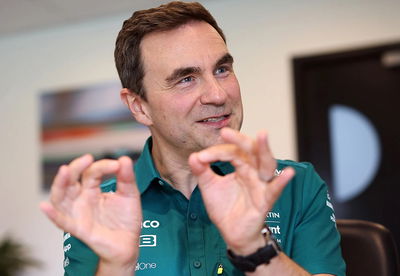
Aston Martin have endured a disappointing season and sit ninth out of 10 teams in the constructors’ championship standings heading into the final six races of the campaign.
The arrival of two-time world champion Fernando Alonso, who will replace the retiring Sebastian Vettel for F1 2023, will only further ramp up the pressure on Aston Martin to turn their fortunes around.
Fallows is confident that Aston Martin will be “much more competitive” in 2023 and can “make a big step forward with the AMR23”.
“When I look around the car, there are areas of improvement absolutely everywhere,” he said. “I mean, we have literally hundreds of projects on the go right now.
“In the aerodynamics department, in the design office, in R&D, throughout the team, people are finding improvements, be it weight improvements, stiffness improvements, improved driver controls, better aerodynamics, a more stable car platform – it's all going to bring performance to the car.”
But Fallows stressed realistic expectations must be set before Aston Martin can become a force to be reckoned with in F1.
“We are incredibly ambitious about shortening the timescales to get to where we want to be, but there's a big difference between becoming the leading midfield team and seriously challenging for race wins and championships,” he added.
“It's something that's going to take years rather than months to achieve, so we have to be realistic about expectations for the next couple of years. We all know what we need to do to get to the front, but it will take time.”
